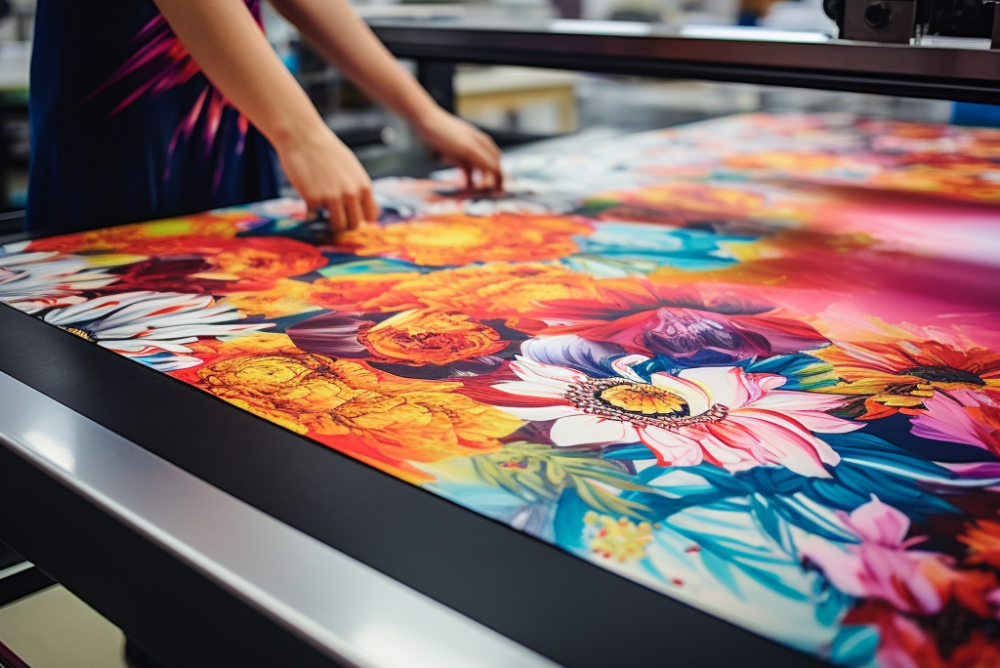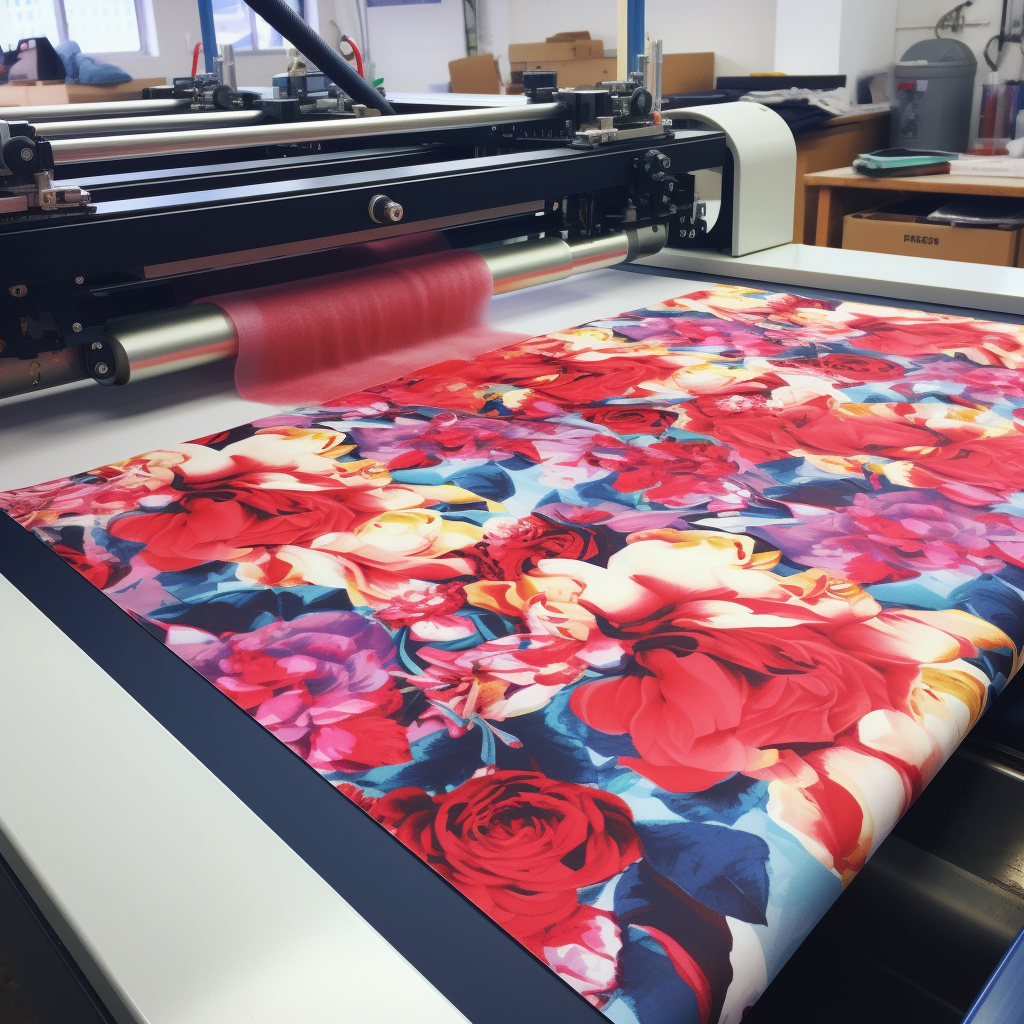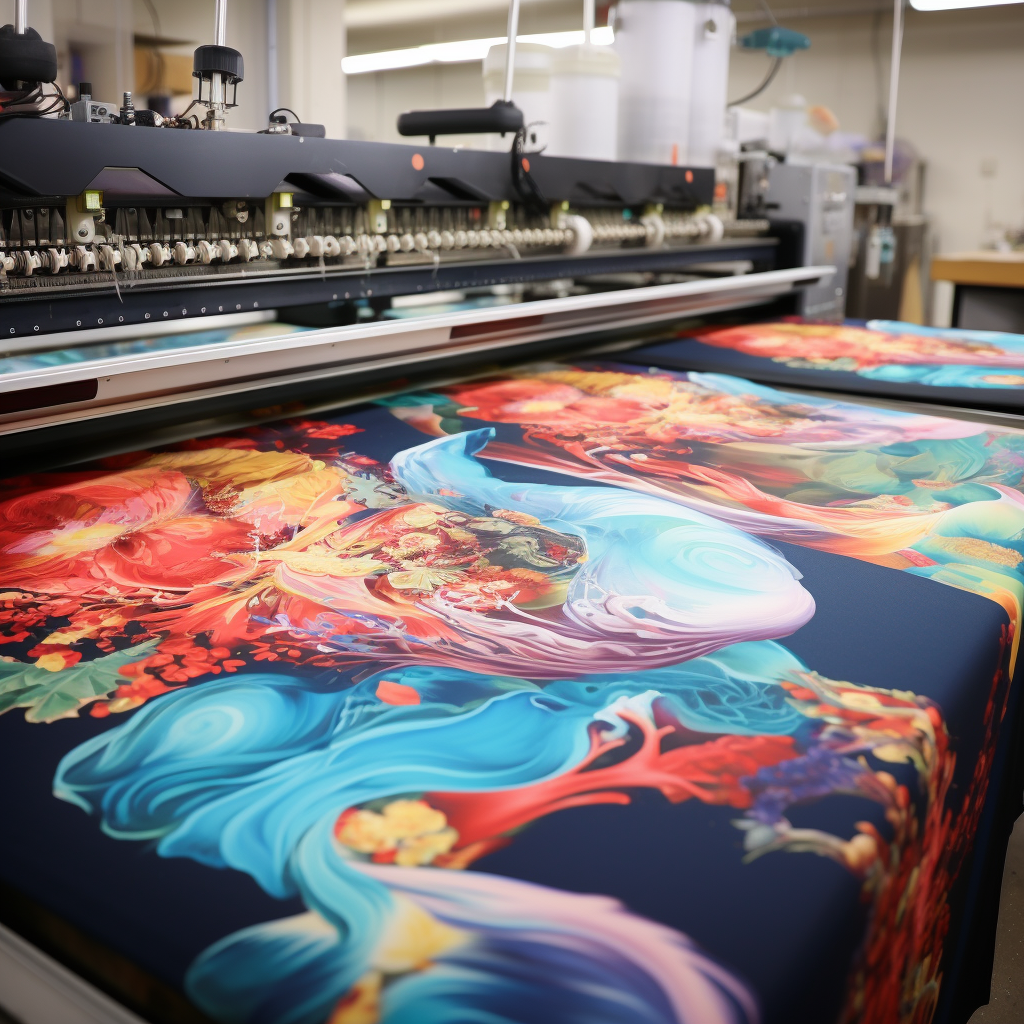Mastering Fabric Printing: Digital vs Screen Printing


Fabric printing is an art as ancient as the civilizations that first spun threads into cloth. It's a craft that has evolved with the times, merging with technology to create an array of techniques to adorn fabrics with beautiful, intricate designs. Among the most popular methods in the contemporary textile industry are digital printing and screen printing. Each method carries its unique set of strengths, weaknesses, and ideal use cases.
This article aims to delve into these two prominent fabric printing methods, comparing and contrasting them to provide insights that will guide you in selecting the best option for your specific needs. Whether you're a fashion designer seeking the perfect print for your next collection, a business owner in need of branded apparel, or a craft enthusiast embarking on a DIY project, this comprehensive guide aims to illuminate the details of each process, the benefits and drawbacks of both methods, and the factors to consider when making your decision.
Join us as we venture into the world of fabric printing, exploring the intricacies of digital printing and screen printing, and the considerations one must keep in mind when deciding between these two powerful techniques.
Understanding Fabric Printing
Fabric printing is a specialized form of printmaking that involves applying color to fabric in specific patterns or designs. In contrast to dyeing where color is applied to the entire textile, fabric printing is about creating distinctive patterns or images on the fabric surface. The history of fabric printing is as rich and varied as the patterns it has produced, from the ancient art of batik in Indonesia to the block printing of India, and the silk screen techniques of China.
Today, technological advances have revolutionized the fabric printing industry, introducing new methods that offer greater precision, flexibility, and speed. Two such innovations are digital printing and screen printing, both of which have dramatically transformed how we transfer designs onto textiles.
Digital printing, also known as direct-to-garment (DTG) printing, involves using a digital printer to apply ink directly onto the fabric. This method allows for high-resolution prints and a virtually unlimited color palette, making it ideal for complex, multi-colored designs.
On the other hand, screen printing, also known as silk screening, involves creating a stencil (or "screen") and using it to apply layers of ink onto the printing surface. Each color is applied using a different stencil, one at a time, combined to achieve the final look. It's a technique that's renowned for producing vibrant, long-lasting colors and is particularly cost-effective for large batches.
While both methods have their place in the fabric industry, choosing between them often depends on the project's specifics, including budget, design complexity, production size, and material type. In the following chapters, we'll delve deeper into each method, comparing their processes, advantages, and disadvantages, and providing some guidance on when one might be more appropriate over the other.
Digital Printing: An Overview
Digital printing, or Direct-to-Garment (DTG) printing, is a relatively new method in the world of fabric printing, having gained popularity in the late 20th century with the rise of digital technology. This technique uses specialized or modified inkjet technology to apply digital designs directly onto the fabric.
In a digital printing process, your design is processed by a computer, then printed directly onto the surface of your product. The printer translates the digital image into a series of tiny dots (much like your home printer would), which it then deposits onto the fabric using a special water-based ink. This ink is subsequently heated, causing it to infuse into the fibers of your fabric and resulting in a high-resolution, full-color print.
One of the standout features of digital printing is its ability to reproduce intricate designs with high precision and a wide range of colors. Since the design is processed digitally, it allows for even the most complex patterns or images to be printed with a high degree of accuracy, making it a favorite for designs with intricate details or a large number of colors.
The digital printing process also requires fewer steps than traditional printing methods, often translating into a faster turnaround time. There's no need for screens or physical setup, and the digital files can be stored and replicated exactly for repeat orders.
However, while digital printing offers unparalleled detail and color range, it's not without its drawbacks. The inks used in DTG printing are often less vibrant than those used in screen printing, and they can fade more quickly over time. Additionally, digital printing can be cost-prohibitive for large print runs as it doesn't scale as well as screen printing.
Screen Printing: An Overview
Screen printing, also known as silk screening, is a traditional method of fabric printing that has stood the test of time. It originated in China nearly two millennia ago and has since been used worldwide for its ability to produce vibrant, durable prints on a variety of materials.
In screen printing, a mesh screen is used to transfer ink onto a substrate, except in areas made impermeable to the ink by a blocking stencil. A blade or squeegee is moved across the screen to fill the open mesh apertures with ink, and a reverse stroke then causes the screen to touch the substrate momentarily along a line of contact. This causes the ink to wet the substrate and be pulled out of the mesh apertures as the screen springs back after the blade has passed.
One of the greatest strengths of screen printing is the durability and vibrancy of the colors it produces. The inks used in screen printing are typically thicker, leading to noticeably bright and vibrant colors even on darker fabrics. Moreover, screen-printed designs tend to last longer without fading compared to other print methods.
Screen printing is also highly efficient for large order quantities. Once the screens are created, it's relatively quick and easy to replicate the design multiple times. As a result, screen printing becomes more cost-effective as the quantity of the print run increases.
However, screen printing also has its limitations. It can be a labor-intensive process, particularly for designs with multiple colors, as each color requires a separate screen. The setup time and costs can be significant, especially for small runs. Additionally, intricate or highly detailed designs can be challenging to reproduce accurately with screen printing.
Comparison: Digital Printing vs Screen Printing
Now that we've outlined the basics of both digital and screen printing, let's delve into a side-by-side comparison to better understand their differences and similarities.
- Detail and Color Variety: Digital printing shines when it comes to reproducing intricate details and a wide variety of colors. Thanks to its high-resolution output and virtually unlimited color palette, it can accurately print complex designs that might not be possible with screen printing.
- Durability and Vibrancy: Screen printing wins in terms of durability and color vibrancy. The thicker inks used in the process result in prints that are not only more vibrant but also more resistant to wear and tear than those produced by digital printing.
- Cost Efficiency: The cost efficiency of each method largely depends on the size of the print run. For small runs, digital printing is often more cost-effective due to its minimal
- setup time and costs. However, for larger quantities, screen printing becomes more affordable due to its scalability.
- Turnaround Time: Digital printing typically has a faster turnaround time since it involves fewer steps and less physical setup. However, for large orders where the screens have already been prepared, screen printing can be remarkably swift.
- Material Flexibility: Both methods offer a wide range of material options. However, screen printing might have a slight edge when it comes to printing on darker fabrics or special materials, where its vibrant inks can truly stand out.
Pros and Cons: Digital Printing
As with any technology, digital printing has its strengths and weaknesses. Let's take a closer look at the pros and cons of this method.
Pros of Digital Printing:
- High Detail and Color Variety: Digital printing can reproduce intricate details and a wide color spectrum, making it ideal for complex, multicolored designs.
- Efficient for Small Runs: Due to minimal setup time and costs, digital printing is usually more cost-effective for small print runs.
- Fast Turnaround Time: With fewer steps and less physical setup, digital printing often provides a quicker turnaround time.
- Design Flexibility: Since designs are digitally processed, it's easy to make last-minute changes or adjustments without incurring significant additional costs.
Cons of Digital Printing:
- Lower Color Intensity: The water-based inks used in digital printing are often less vibrant than those used in screen printing.
- Less Durable: Prints produced by digital printing may fade faster over time compared to those from screen printing.
- Costly for Large Batches: Digital printing does not scale as well as screen printing, making it less cost-effective for large print runs.
- Limited Material Options: While digital printing works on a variety of fabrics, certain materials and darker colors may not yield the best results.
Pros and Cons: Screen Printing
Screen printing, like digital printing, has its own set of advantages and disadvantages. Understanding these can help you determine if this method is the right choice for your project.
Pros of Screen Printing:
Durability and Vibrancy: Screen printing's major strength is the durability and vibrancy of its prints. The inks used in screen printing are typically thicker, resulting in prints that are not only more vibrant but also more resistant to wear and tear.
- Cost-Effective for Large Batches: Screen printing becomes more cost-effective as the quantity of the print run increases, making it a good choice for large orders.
- Variety of Materials: Screen printing can be done on a wide range of materials, including difficult fabrics and dark colors where its vibrant inks can truly stand out.
- Long-Lasting Designs: Designs produced by screen printing tend to last longer without fading compared to other printing methods.
Cons of Screen Printing:
- Limited Detail and Color Variety: Screen printing may not reproduce intricate details or a wide variety of colors as well as digital printing.
- Setup Time and Costs: Creating screens for each color in the design can be labor-intensive and costly, especially for small runs or designs with many colors.
- Less Design Flexibility: Any changes or adjustments to the design require new screens to be made, which can be time-consuming and costly.

Choosing the Right Method for Your Project
Deciding between digital printing and screen printing for your project depends on several factors. Here are some key considerations to help guide your decision:
- Design Complexity: If your design is highly detailed or involves a wide range of colors, digital printing may be the preferred method due to its high-resolution output and virtually unlimited color palette.
- Order Quantity: If you're planning a small print run, digital printing, with its minimal setup time and costs, could be more cost-effective. For larger quantities, screen printing's cost-effectiveness scales up, making it a more affordable choice.
- Color Vibrancy and Durability: If color vibrancy and durability are paramount—for example, for outdoor banners or high-use garments—screen printing's thicker inks and long-lasting prints may be more suitable.
- Budget: If budget is a major factor, consider the cost implications of each method. Digital printing typically has lower setup costs but doesn't scale as well for large batches as screen printing does.
- Turnaround Time: If you're working on a tight deadline, digital printing's faster turnaround time could be a deciding factor. However, for large orders where the screens have already been prepared, screen printing can also be speedy.
- Material Type: Both methods work on a variety of fabrics, but if you're printing on darker fabrics or special materials, screen printing might yield better results.
Remember, the "best" method depends on the specifics of your project. Understanding the strengths and limitations of both digital and screen printing can help you make an informed decision that will yield the best results for your needs.
Emerging Trends in Fabric Printing
As we look toward the future, it's clear that fabric printing will continue to evolve, shaped by new technologies and consumer demands. Here are a few emerging trends to watch:
1. Sustainable Printing Practices: As sustainability becomes a growing concern, the demand for eco-friendly printing practices is on the rise. This includes the use of biodegradable inks, energy-efficient printing machines, and sustainable fabrics.
2. Personalization and Customization: With the rise of e-commerce and digital technology, consumers increasingly seek personalized and customized products. This trend is driving innovations in both digital and screen printing to accommodate more bespoke designs and small-batch runs.
3. 3D Printing on Fabric: While still in its early stages, 3D printing on fabric presents exciting possibilities, from creating textured designs to potentially printing entire pieces of clothing.
4. Smart Textiles: The integration of technology into textiles—such as fabrics that change color, provide heating, or connect to the internet—will likely impact future printing methods to accommodate these smart features.
5. Advances in Ink Technology: Innovations in ink technology, such as the development of more vibrant and durable inks for digital printing or more eco-friendly inks for screen printing, will continue to enhance the quality and sustainability of fabric printing.
These trends point to a future where fabric printing is more sustainable, personalized, and innovative. As technologies continue to advance, the possibilities for fabric printing are virtually limitless.
Conclusion
Fabric printing has come a long way from its ancient roots. The advancements in technology have given us an array of methods, each with its unique strengths and limitations. Digital printing and screen printing, two of the most popular techniques today, offer different benefits depending on the complexity of design, order quantity, color vibrancy, durability, budget, turnaround time, and material type.
As we move into the future, the trends in fabric printing indicate a shift towards more sustainable practices, personalization, and technological innovation, from 3D printing to smart textiles. The field is ripe for further exploration and innovation, promising an exciting future for designers, manufacturers, and consumers alike.
While the landscape can seem complex, understanding these different methods and trends can help you make informed decisions and navigate the world of fabric printing with ease. Whether you're a fashion designer creating a new line, a business owner seeking branded merchandise, or a hobbyist working on a personal project, there's a fabric printing method that's just right for you.





-500x500.jpg)
-500x500.jpg)
-500x500.jpg)
-500x500.jpg)
-500x500.jpg)